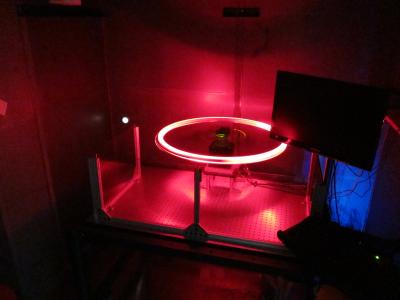How to manipulate single biomolecules at low cost
June 2, 2010
A new massively parallel approach for manipulating single DNA and protein molecules and studying their interactions under force, called “single molecule centrifugation,” has been developed by researchers from the Rowland Institute at Harvard University.
The “The Centrifuge Force Microscope” (CFM) allows for improvements in throughput and cost in studying biological systems ranging from DNA replication to blood clotting, compared to technologies such as optical and magnetic tweezers and the atomic force microscope.

The Centrifuge Force Microscope (CFM) uses centrifugal force to manipulate molecules, allowing forces to be applied to many molecules at once while simultaneously observing their nano-to-microscale motions (Dr. Wesley Wong)
Developing the instrument involved miniaturizing a light microscope and safely rotating it at high speeds while maintaining precision and control.
Experiments involve tethering thousands of micron-sized “carrier” particles to a surface and observing their motion as the sample rotates to generate the centrifugal force.
More info: Harvard University news